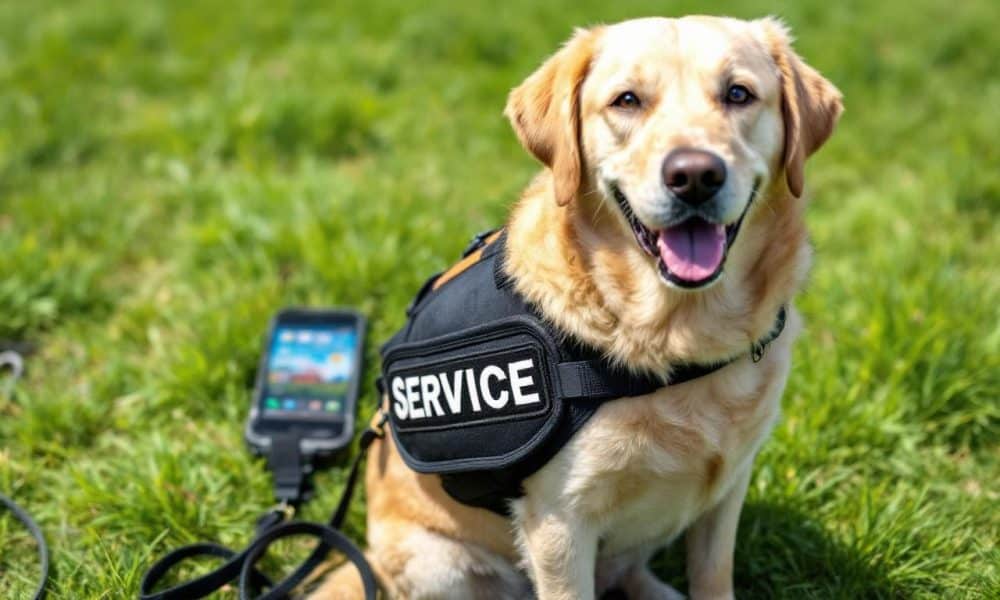Introduction to Adopting Service Dogs that Didn’t Quite Make the Cut
At DogingtonPost, we’re excited to explore a unique adoption opportunity: service dogs that didn’t quite make the cut. These incredible animals have received top-notch training but, for various reasons, didn’t complete their service dog certification. Adopting these dogs can be a rewarding experience, giving them a loving home while benefiting from their advanced training.
What Happens in Service Dog Training?
The Rigorous Training Process
Service dog training transforms puppies into highly skilled assistants. Organizations like Assistance Dogs International set strict standards for these programs. Training typically lasts 18 to 24 months and costs between $25,000 and $50,000 per dog.
The Training Journey
Puppies begin their journey at 8 weeks old. They learn basic obedience and socialization skills with volunteer puppy raisers. At 14 to 18 months, they return to the training center for advanced work. Here, they master tasks like retrieving objects, opening doors, and alerting to medical conditions.
Why Some Dogs Don’t Complete Training
The success rate for service dog training is only about 30%. Common reasons for failure include:
- Health issues: Hip dysplasia or allergies can disqualify a dog.
- Temperament: Some dogs are too energetic or easily distracted.
- Work ethic: Not all dogs have the drive for constant training.
- Socialization problems: Fear or aggression in public settings is a deal-breaker.
Available Dogs for Adoption
Failed service dogs come in various breeds and ages. Labrador Retrievers, Golden Retrievers, and German Shepherds are common. You’ll find dogs ranging from 18 months to 3 years old. These dogs often have excellent basic training and socialization skills, making them great family pets.
Adoption Organizations
Organizations like Freedom Service Dogs of America and Guide Dogs for the Blind regularly have dogs available for adoption. Those not up to the standard are offered for adoption or are transferred to programs for other service dogs such as police or search and rescue. They provide detailed profiles of each dog, including their training history and reasons for career change.
Where to Find Service Dog Dropouts
Top Organizations for Service Dog Adoptions
Several reputable organizations across the United States specialize in rehoming well-trained pups that didn’t complete their service dog training. Freedom Service Dogs of America, based in Colorado, offers a “career change” program for dogs between 18 months and 3 years old. These dogs have received extensive training but didn’t quite make the cut as service animals.
Adoption Requirements
Adopting a service dog dropout isn’t as straightforward as adopting from a shelter. Most organizations have specific requirements for potential adopters. You’ll typically need to:
- Be at least 21 years old
- Have a fenced yard
- Provide references from your veterinarian
- Show proof of homeownership or landlord approval for pet ownership
- Demonstrate the ability to provide proper care, including regular exercise and veterinary check-ups
The Adoption Process
The process of adopting a service dog dropout can take time. Many organizations have waiting lists due to high demand. The adoption process typically involves an application, interview, and home visit to ensure the best match between dog and adopter.
How to Prepare Your Home for an Ex-Service Dog
Create a Safe Space
Ex-service dogs need structured environments. Set up a quiet area with a comfortable bed, water bowl, and toys. This space will serve as a retreat when your dog needs downtime. Remove potential hazards like loose wires or toxic plants. Install baby gates to limit access to certain areas initially.
Maintain Training Consistency
Familiarize yourself with the commands they’ve learned. The American Kennel Club suggests spending at least 15 minutes daily to reinforce these commands. Invest in puzzle toys and treat-dispensing games to keep their minds active.
Meet Health and Exercise Needs
Ex-service dogs are often high-energy breeds that require significant exercise. Plan for at least an hour of physical activity daily. Schedule a vet check-up within the first week of adoption. Many service dog organizations provide detailed health records, but a fresh assessment ensures you’re aware of any specific needs.
Adapt Your Routine
Ex-service dogs are used to structured schedules. Try to establish a consistent daily routine for feeding, exercise, and rest. This will help your new companion adjust more quickly to their new home environment.
Provide Mental Stimulation
These highly trained dogs are accustomed to mental challenges. Incorporate training sessions, puzzle toys, and new experiences into their daily life. This will help prevent boredom and maintain their sharp minds.
Conclusion
Adopting service dogs that failed their training programs offers a unique opportunity to welcome a well-trained companion into your home. These exceptional animals possess advanced skills and socialization, making them excellent pets for the right families. You provide a loving home to a deserving dog and gain a highly trained companion who can enrich your daily life. The impact of this adoption extends beyond your household, as you give a second chance to a dog that might otherwise struggle to find placement. With patience, love, and proper care, you can create a happy and fulfilling life for your new companion.

